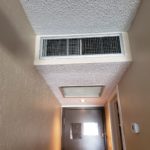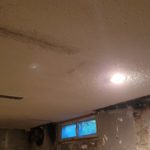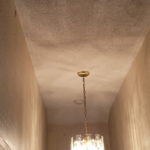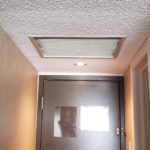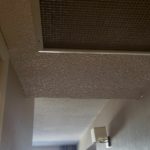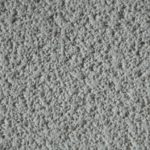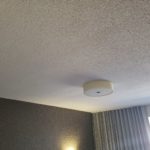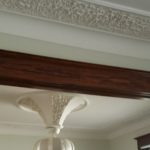Asbestos In Popcorn Ceiling
What is Asbestos in popcorn ceiling
Asbestos is a mineral fiber that was once commonly used in various building materials due to its strength, heat resistance, and insulating properties. Popcorn ceilings, also known as acoustic or textured ceilings, were a popular design choice in the mid-20th century, and some of them were created using a spray-on texture that contained asbestos fibers.
Asbestos in popcorn ceilings was used to enhance the material’s durability and fire resistance. However, it was later discovered that asbestos exposure poses serious health risks, particularly when the fibers become airborne and are inhaled. Inhalation of asbestos fibers can lead to serious respiratory diseases, including lung cancer, asbestosis, and mesothelioma.
Due to the health risks associated with asbestos, its use in building materials has significantly declined, and it has been banned in many countries. If you have a popcorn ceiling that was installed prior to the 1980s, there is a possibility that it contains asbestos. It’s important to take precautions when dealing with such ceilings, and if you suspect the presence of asbestos, it is recommended to consult with professionals for testing and removal. Asbestos removal should be carried out by trained and certified asbestos abatement professionals to ensure safety and compliance with regulations.
Popcorn ceilings may contain asbestos in stucco applied to a decorative medium such as paper, cardboard, asbestos cement board or asbestos fabric. The asbestos fibers were mixed with Portland cement and water, thrown onto the substrate using a machine, then smoothed with a trowel. After applying the coat of stucco to the substrate, it was allowed to dry for several days before painting. Asbestos in popcorn ceiling materials is generally not friable, but it can be found in greater amounts in deteriorated or damaged materials. In some cases, the materials have been found to contain asbestos in concentrations greater than 0.1%.
In addition to asbestos-containing popcorn ceiling materials installed as a complete system, asbestos has been added as an “upgrade” to the basecoat or finish of non-asbestos systems such as asbestos floor tiles vinyl and durable asbestos materials. People who live in homes with materials that contain asbestos, such as stucco ceilings, are at risk of developing asbestos-related diseases. There is also evidence that women exposed to asbestos during pregnancy are more likely to give birth to low birth weight children, whose lungs may be damaged.
Why is there asbestos in popcorn ceiling ?
Asbestos was added to popcorn ceilings for several reasons, primarily related to its desirable physical properties. Asbestos is a naturally occurring mineral that has several characteristics that made it attractive for use in building materials:
Fire Resistance: Asbestos is highly resistant to heat and fire. Adding asbestos to building materials, including popcorn ceiling textures, was seen as a way to enhance the fire resistance of those materials.
Durability: Asbestos fibers are strong and durable. This made materials containing asbestos resistant to wear and damage, contributing to their longevity.
Insulating Properties: Asbestos has excellent insulating properties, both in terms of heat and sound. This made it a popular choice for acoustic or textured ceilings, as it could help absorb sound and improve the acoustics of a space.
Affordability: Asbestos was relatively inexpensive and readily available, making it an economical choice for manufacturers of building materials.
Popcorn ceilings with asbestos were commonly installed in homes and buildings during the mid-20th century, particularly from the 1950s to the 1980s. However, as awareness of the health risks associated with asbestos exposure increased, its use in building materials, including popcorn ceilings, declined. Today, the use of asbestos in construction materials is heavily regulated or banned in many countries due to its link to severe respiratory diseases and cancer when its fibers become airborne and are inhaled. If you suspect the presence of asbestos in your popcorn ceiling, it is crucial to consult with professionals for testing and, if necessary, proper abatement procedures.
Disturbance of popcorn ceilings containing asbestos can create asbestos dust which poses an asbestos exposure risk to workers and employees. Because asbestos-containing popcorn ceiling materials generally do not contain asbestos in a form that easily crumbles under hand pressure, asbestos dust can be created when the material is cut or broken during withdrawal.
For this reason, it is important to properly plan and implement a stucco and popcorn ceiling asbestos removal project. This includes carrying out an air monitoring survey to determine if asbestos fibers are present in the air.
Asbestos is found in a multitude of construction materials such as plasters and cements, joint compounds, decorative finishes (stucco ceiling and textured paints), insulation, floor and ceiling tiles, as well as than wall coverings. When asbestos-containing materials are damaged or “friable”, asbestos fibers can be released into the air and pose a real health risk to a building’s occupants and workers.
What is a stucco ceiling containing asbestos?
Stucco ceilings may contain asbestos. They are not asbestos free like newer drywall ceiling materials. However, asbestos stucco in homes is generally considered old news and no longer presents a hazard if left undisturbed.
The popcorn type asbestos ceiling is also sometimes called “cottage cheese” or “cottage cheese” asbestos ceiling. This asbestos material was used in homes from the 1930s until the mid-1970s when it was phased out. Stucco asbestos ceilings were often used as insulation material in the attics of homes, but it could also be found on other interior or exterior walls where the stucco asbestos served as a weather barrier.
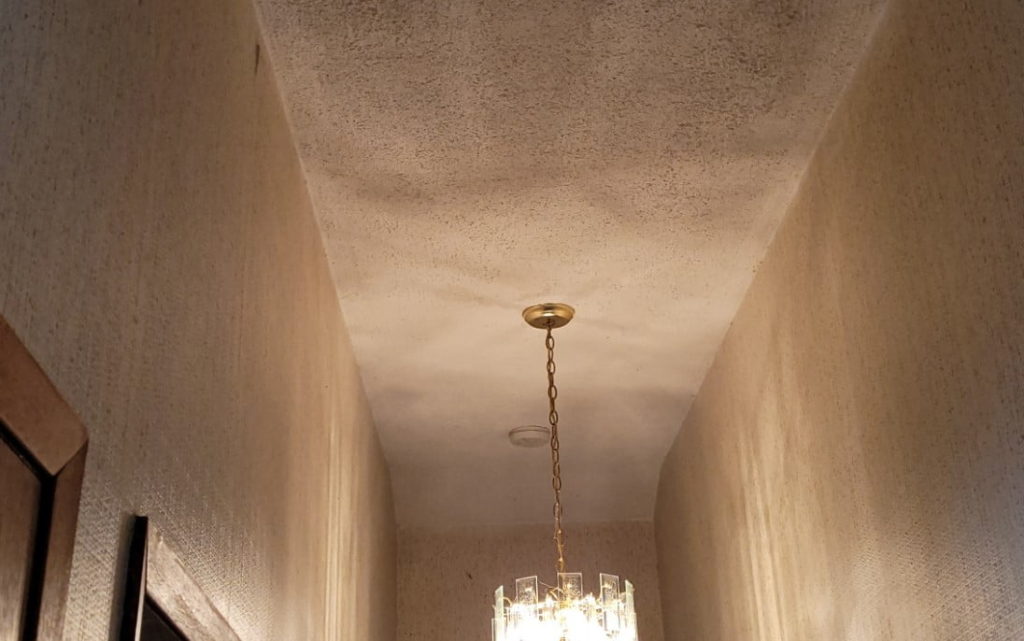
However, stucco asbestos was never used as the actual ceiling material, but rather installed over the drywall ceiling. Stucco is a type of plaster and cement mixture that creates a textured surface, often found on the ceilings and walls of homes built before 1979. Other asbestos-containing materials that can be found in stucco asbestos ceilings are asbestos transit, asbestos paper and asbestos fabric.
Many stucco ceilings containing asbestos have been removed from homes over the years. Asbestos in popcorn ceiling do not pose a health risk, provided that asbestos-containing dust is not created by the normal wear and tear of the textured surface of the drywall. Asbestos fibers can become airborne if disturbed in any way, such as by scratching the surface of the drywall.
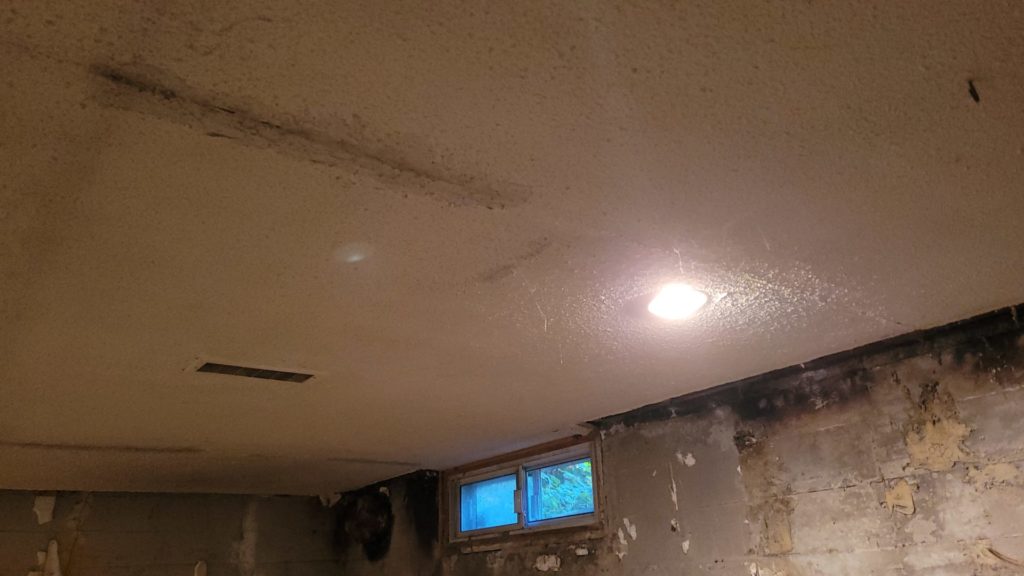
Many people know that asbestos is a dangerous substance and the cause of some cancers. However, what they don’t realize is that asbestos can be found in many different building products, including ceiling tiles, insulation, sealants, and even textures like stucco cornice.
Asbestos is a natural, white fibrous material with a tufted and stringy texture. This material is flexible, durable and bendable.Asbestos has been part of Canadian culture for over 130 years, as the country was one of the world’s leading producers during the heyday of asbestos production from the 1930s to the 1980s.
You won’t be able to tell if your ceiling is made up of asbestos just by looking at it. The ideal solution is to take a sample from the ceiling and send it to a certified laboratory. Microscopic polished glass slides are the most common means of detecting asbestos using polarized light microscopy. It is widely regarded as the most reliable technique for detecting asbestos.
When was popcorn ceilings popular?
Popcorn ceilings, also known as acoustic or textured ceilings, gained popularity in the mid-20th century. They were commonly used in residential construction from the late 1950s through the 1980s. The textured appearance was considered fashionable during this period and was often used as a design element to add a decorative touch to ceilings. There were practical reasons for the popularity of popcorn ceilings as well. The texture helped hide imperfections, provided acoustic insulation, and was cost-effective compared to smooth or finished ceilings.
However, as architectural and design preferences evolved, and awareness of potential health issues associated with certain popcorn ceilings (particularly those containing asbestos) increased, their popularity declined. In more recent construction and home renovation projects, smooth or finished ceilings have become more common, and popcorn ceilings are often considered outdated.
The use of asbestos in some popcorn ceiling materials is one of the reasons for safety concerns associated with these types of ceilings. Asbestos use in construction materials diminished in the late 1970s and early 1980s due to increased awareness of its health risks, leading to regulatory changes and a shift toward alternative materials.
Additionally, due to Canada’s particularly permissive asbestos laws until 2018, commercial buildings also pose a significant risk of containing this hazardous material. If you have any concerns, a thorough inspection with asbestos testing can provide you with a clear answer and peace of mind.
When was asbestos in stucco ceilings, along with its other uses, banned in Canada?
Asbestos regulations have been in effect in Canada since 1985. Between 1985 and 2012, exposure to asbestos was prohibited or limited by the Canadian Code of Practice for the Control of Asbestos in the Workplace[Regulation 833 , O.C. 982-2003].
In its Asbestos Regulations, Health Canada has provided policy proposals regarding building materials containing asbestos, including asbestos-containing stucco finishes. In the asbestos regulations of the province of Ontario, the use of asbestos is prohibited in any spray application to a ceiling, including stucco ceilings containing asbestos.
Quebec’s asbestos regulations are less clear or more contradictory regarding the prohibition of asbestos for stucco ceilings. When asbestos regulations were first introduced by the Quebec Ministry of Labor in 1986, paints and stucco coatings containing asbestos were not explicitly mentioned. In October 2012, Health Canada provided an update on asbestos regulations regarding spray equipment and materials containing asbestos. In its recommendations, Health Canada proposed banning asbestos above 1,000 square meters.
Asbestos popcorn ceiling & Asbestos Ceiling tiles : when were they banned?
The ban on asbestos ceiling tiles or asbestos popcorn ceiling continued, but asbestos materials were phased out over a long period. The ban on asbestos began with the phasing out of asbestos in industrial applications.
Then the use of asbestos was stopped in construction and building products such as roofing felts and shingles. Finally, asbestos-based insulation was banned, including ceiling insulation made from asbestos materials.
The ban on asbestos was supplemented by the Consumer Protection Act of 1988, which banned asbestos in vinyl, asphalt and other flooring materials. Asbestos has been phased out since 1989, but ceiling tiles containing asbestos were common until asbestos popcorn ceilings were not banned until 1999.
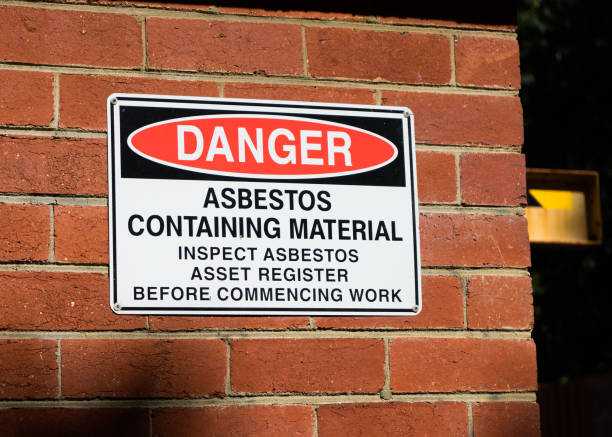
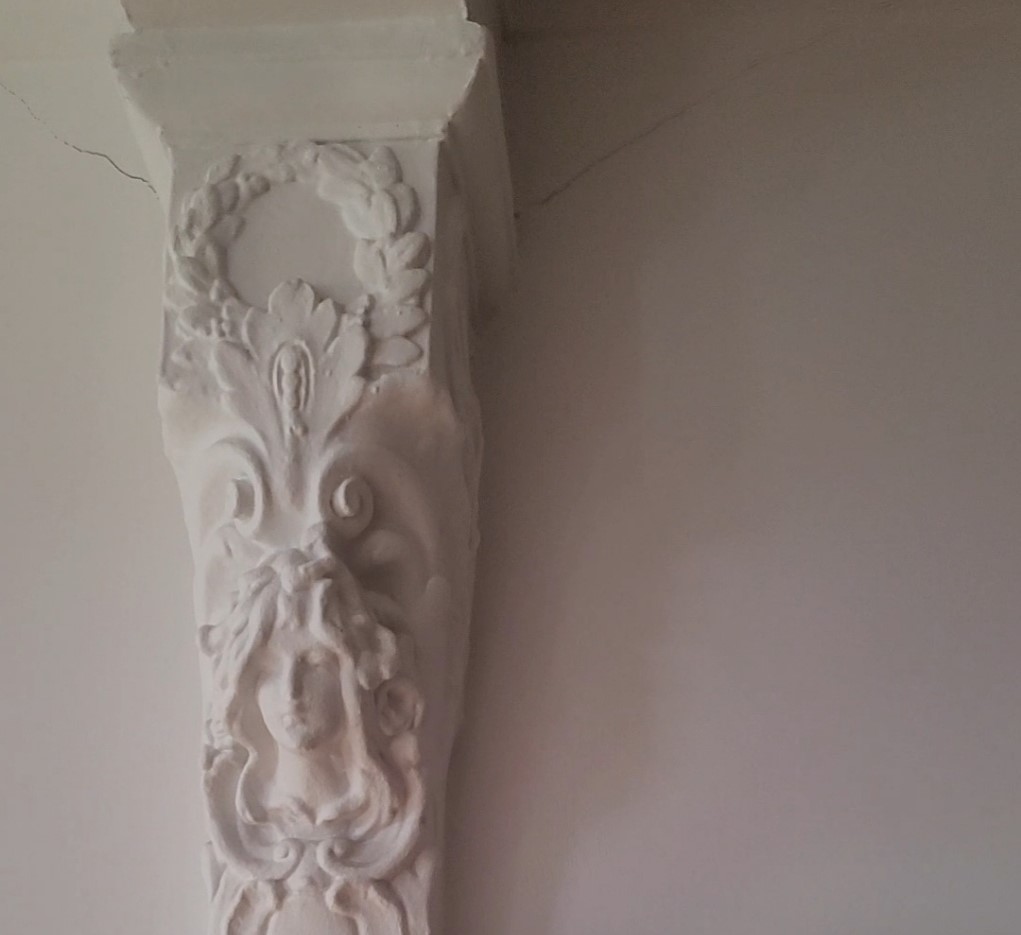
Stucco ceiling and decorative asbestos finish
The stucco ceiling is a friable material, which means that it is very easy to damage. Friable asbestos-based materials release dust at the slightest disturbance. Inhaling asbestos dust can lead to serious illnesses such as asbestosis, lung cancer and mesothelioma.
A popcorn ceiling, also known as a textured ceiling, faux stucco finish, or acoustical ceiling, is a term for a spray or ceiling treatment of a texture mixed with paint. It was the standard for residential bedroom and hallway ceilings for its bright, white appearance, its ability to conceal imperfections, and its acoustic characteristics.
Decorative plaster moldings containing asbestos were an integral part of the architectural character of many homes.
The plasterers of yesteryear left us with magnificent walls, often adorned with cornices and a rose window on the ceiling. Asbestos was mixed into the plaster to provide insulation and heat resistance, so asbestos-containing decorative moldings became standard in many Canadian homes built between 1930 and 1970. Decorative plasters containing asbestos asbestos are made up of asbestos, water, sand and Portland cement. Some coatings containing asbestos have a clay base.
Plaster containing asbestos is friable, that is to say, it crumbles easily when touched. Plasters containing asbestos can release asbestos fibers into your home if broken or damaged by renovations or construction work. Since asbestos is no longer used in Canada, plaster containing asbestos installed after 1975 does not pose a health risk. However, homeowners who have decorative moldings or other products containing asbestos should have them inspected by an asbestos professional.
The use of asbestos in building materials has been widespread, moldings have not been spared. Plasterers took to adding asbestos to their plaster to make it easier to apply, reduce drying time and achieve a sturdier result. The practice stretched until the 1970s, then was formally banned in 1985.

Test for asbestos in popcorn ceiling
Testing for asbestos in a popcorn ceiling should be done with caution to avoid the release of asbestos fibers into the air. Here’s a general guide on how to test for asbestos in a popcorn ceiling:
Professional Testing:
DIY Testing:
Purchase a DIY Asbestos Testing Kit : DIY testing kits are available for purchase online or at some home improvement stores. Ensure that the kit is from a reputable source and provides clear instructions.
Follow Kit Instructions: Read and follow the instructions provided with the testing kit carefully. Typically, the process involves wearing protective gear, wetting the area, and carefully collecting a small sample of the popcorn ceiling.
Mail Sample to Certified Laboratory: Package the sample as instructed and send it to a certified asbestos testing laboratory. Wait for the results, which will indicate whether asbestos is present and at what concentration.
Cautionary Steps:
Protective Gear: If collecting a sample yourself, wear protective gear, including a mask that is specifically designed for asbestos.
Minimize Disturbance: Wet the area before sampling to minimize the release of asbestos fibers into the air. Avoid unnecessary disturbance of the popcorn ceiling.
Seal Off the Area: Consider sealing off the area where the sampling will occur to prevent the spread of any released fibers.
Professional Consultation: If the test confirms the presence of asbestos, consult with asbestos abatement professionals for guidance on proper removal procedures.
Always prioritize safety when testing for asbestos, and if you are unsure or uncomfortable with the process, it is recommended to hire a certified professional for testing and any necessary remediation.
How Dangerous Is Asbestos in Ceilings?
Popcorn ceilings typically contain asbestos in varying proportions, often ranging from 1% to 10%. Although these percentages might seem low, any presence of asbestos in popcorn ceilings warrants attention and necessitates proactive measures.
Fortunately, asbestos doesn’t inherently pose severe health risks when left undisturbed and completely intact. However, popcorn ceilings are constructed from materials that can easily crumble, presenting a risk of releasing toxic asbestos dust into the air with even minimal disturbances. Inhalation of such dust can lead to significant health issues.
Given the potential threat to your family’s well-being, it is advisable to seek professional testing for your popcorn ceiling, particularly if signs of deterioration are observed or if you are contemplating home remodeling. This precautionary step helps ensure a safe living environment and minimizes the health risks associated with asbestos exposure.
Handling Asbestos in Popcorn Ceilings: 6 Practical Tips
Discovering asbestos in your popcorn ceilings? Take note of these helpful suggestions:
- Inspect for visible damage as a sign that removal may be necessary.
- Avoid using tape, screws, or nails in the ceiling.
- Refrain from scraping or touching the popcorn ceiling.
- Steer clear of installing shelving that connects with the ceiling.
- Avoid using bunk beds in rooms with asbestos popcorn ceilings.
- Refrain from throwing pillows or toys at the ceiling.
Asbestos Popcorn Ceiling Removal
Removing a popcorn ceiling containing asbestos requires many precautions. This is a job that should be done by trained professionals.
The stucco ceiling is a friable material, which means that it is very easy to damage. Friable asbestos materials give off toxic dust at the slightest disturbance. Inhaling asbestos dust can lead to serious illnesses such as asbestosis, lung cancer and mesothelioma.
For decontamination work on your ceiling, the best solution is to hire asbestos experts. They will provide you with a certificate attesting to the presence of asbestos in the ceiling. You must follow certain safety measures when removing asbestos from your ceilings.
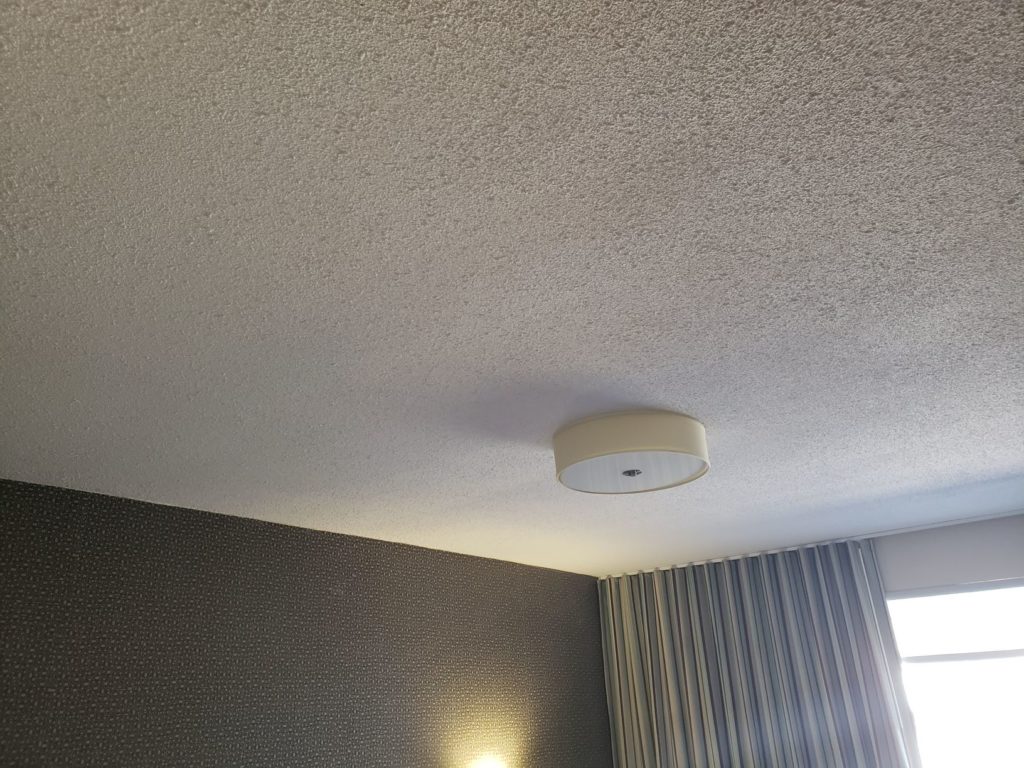
Before carrying out the asbestos removal, you must inform your neighbors and the local authorities of the asbestos removal work. If asbestos is found in your popcorn ceiling, it is necessary to hire asbestos experts to take care of the asbestos removal work. It is not advisable to remove asbestos from ceilings on your own, as it can be dangerous to your health and the health of others.
For asbestos removal, asbestos decontamination experts follow strict and specific procedures:
-They first isolate the asbestos part and reduce its air circulation.
-They then inspect and analyze it to determine where asbestos might be present in the popcorn ceiling
-They then remove the asbestos materials around joints, ceilings and walls. They apply a thin layer of the adhesive (encapsulant) to the asbestos to ensure a complete asbestos removal process.
-Then they re-inspect the room to determine if the asbestos has been completely removed from the ceiling area.
Once the asbestos is removed from the ceiling, they clean and decontaminate it. For asbestos removal work, asbestos experts use appropriate asbestos removal tools and equipment to ensure your safety and that of your neighbors.
Whether the popcorn ceiling in your house or apartment contains either 1% or 10% asbestos, the advice remains the same as for all materials containing asbestos. The cap will not endanger your health or that of your family as long as it remains completely intact or properly encapsulated. But in the long run, you’ll end up having to have it removed by a professional. A higher percentage of asbestos is worse, but the structure is still dangerous even if it contains only a few percent of asbestos.
In conclusion
Fortunately, the federal and provincial ban on asbestos in Canada and Quebec ensures that future generations may or may not be exposed to asbestos. However, as this mineral was imported and used until fairly recently, it is extremely easy to contract diseases that are directly or indirectly related to asbestos. Although chrysotile asbestos was banned in 1999, it can still be found in significant quantities in the pipes of schools and professional buildings. There are even brake discs that contain asbestos.
Asbestos inhalation is a serious risk, especially for people with compromised or weakened immune systems. To avoid it in your own home, you must act immediately. For all your asbestos removal and decontamination projects, contact the Gestion Xpress Démolition Inc. team. We are the experts in asbestos removal and we have the license and insurance to assist you with any project. Call us today for a quick and free quote.
more answers to your questions
Frequently asked questions about asbestos popcorn ceiling
Is it worth removing asbestos popcorn ceiling?
Ultimately, the decision to remove asbestos popcorn ceiling depends on your priorities, the condition of the material, and your willingness to invest in a safer living environment. If you are unsure, it is advisable to seek professional guidance to make an informed decision based on your specific circumstances.
What are the odds of asbestos in popcorn ceiling?
The likelihood of asbestos being present in a popcorn ceiling depends on the age of the building and the time it was constructed. Popcorn ceilings that were installed before the 1980s have a higher probability of containing asbestos. Asbestos was commonly used in construction materials, including popcorn ceiling textures, for its fire-resistant and durable properties.
Is it safe to drywall over asbestos popcorn ceiling?
Covering an asbestos popcorn ceiling with drywall is a common method used to encapsulate the asbestos-containing material and reduce the risk of exposure. However, it’s important to note that this approach should be undertaken with caution and in accordance with safety guidelines.
What should you do if you are exposed to asbestos in your home?
If you suspect or confirm exposure to asbestos in your home, it’s crucial to take immediate and appropriate actions to minimize health risks.
Remember, asbestos exposure can have serious health consequences, and it’s important to prioritize safety and follow established protocols. Seeking professional assistance is crucial to ensuring that asbestos-related issues are addressed in a safe and compliant manner.
Is it OK to leave popcorn ceiling?
Whether it’s okay to leave a popcorn ceiling in place depends on several factors, including your preferences, the condition of the ceiling, and potential health considerations.
In summary, it’s generally okay to leave a popcorn ceiling if it’s in good condition and you’re comfortable with its appearance. However, if there are concerns about asbestos, damage, or if you want to update the look of your home, consulting with professionals for testing or removal may be a prudent choice. Always prioritize safety and consider the long-term implications of your decision.

